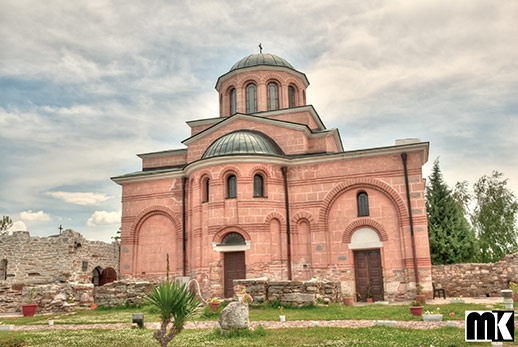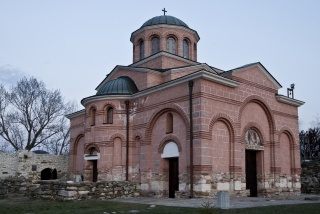Traveler's Guide
East Macedonia & Thrace
Medieval Monastery "St. John the Precursor" - Kardzhali

The first churches of the complex emerged in the second half of the 9th century.The main temple is of a rare and transitory type. This means a gradual transition from the classical basilica to the Byzantine cross-domed church. The building had three apses to the east, with a separate altar table in each. This is an echo of the Eastern Christian tradition and belief that one altar cannot be used twice a day.There is a small chapel in the south, with a tomb of a prominent Christian missionary.
The names of three bishops, Thomas Constantine and Evstatik, become evident from the lead seals found in the administrative center of Perperikon.
At the very beginning of 11th century, the two buildings were dismantled to the ground and on their place was erected a new building, a monastery. To keep safe from enemy attacks,it was surrounded by a strong wall, reinforced with eight rectangular towers. A magnificent church, almost 21 metres long, was built inside.The temple was entered through a wide portico which led to a big porch, which reached the central part. A huge dome, resting on four strong pillars, rose up above it.The church ends with three semicircular apses to the east, which housed the altar.Two big semi-circular niches, in which the monks resided, can be seen from the north and south.
These and other features define the temple as a church from the "Athonite type". Such cult buildings were built in the 11th century due to the organized monasticism ideas, propelled by St. Athanasius of Mount Athos. In structural details, the building found in Kardzhali, is connected with the earliest temple of the Holy Mountain, the Great Monastery of "St. Athanasius of Athos." The main church of the monastery was richly decorated. Its walls alternate with stone and brick layers, polygonal surfaces, blind arches and niches. Pieces of marble were found in the interior.During the second half of the 12th century, the church was painted thoroughly with images of warriors, saints, church priests, monks,and hermits. On these murals was discovered a graphite- inscription in Old Bulgarian language, which revealed the ancient name of the monastery.
The interior of the monastery was full of buildings. Even in the second half of the 11th century, north of the main chapel,a small but very elegant chapel adjoined. From the east, one can see the monks dining table, which is an important element of monasteries. It is connected to the monumental residential palace of the abbot, who used to be at the same time the bishop for the entire area.
The historical records and the preserved remains of constructions give rise to the claims that it became an Episcopal center at the end of the 9th and the beginning of the 10th century, and later – a metropolitan center.Evidence of this are the unique artifacts found in the temple and near it – five brick tombs.Four of them belong to senior clerics, and the fifth - to a prominent secular aristocrat. One of the tombs, located in the church, was hermetically sealed. After it was carefully unsealed, relics of a senior Christian cleric from the end of the 11th and the beginning of the 12th century were found. According to some scientists, it belongs to Evtimiy Tarnovsky,while others reject this hypothesis because of lack of evidence.
Furthurmore, a fully peserved stole was found in the tomb. Gold- woven and of finest patterns, the stole was found alongside holy relics, sewn into a linen cross.Such findings have been preserved in only four places in the world and ,according to specialists, Bulgaria is the first. This proves that present-day Kardzhali was an important Christian center during the Middle Ages.
The exquisite fabric amazes with the masterful craftsmanship with which it had been produced. Historical evidence suggest that the stole was made in Constantinoploe and was very expensive. These finding make the site an object of world importance.
According to a recent archaeological research, in the early 13th century, the church was destroyed by the knights of the Fourth Crusade. It was restored for a brief time but the Turkish invasion into the Balkans turned it into a ruin.
In 2000, the newly restored church of the monastery was sanctified.
Due to the high artistic and architectural value, the remains of the medieval monastery and church St Yoan Prodrom were proclaimed culture monuments of national importance. Most of the finds, discovered during explorations of the monastery, can be seen in the Regional History Museum of Kardzhali.
FREE ENTRANCE
Father Nikolay Velichkov
Address
No information available.






